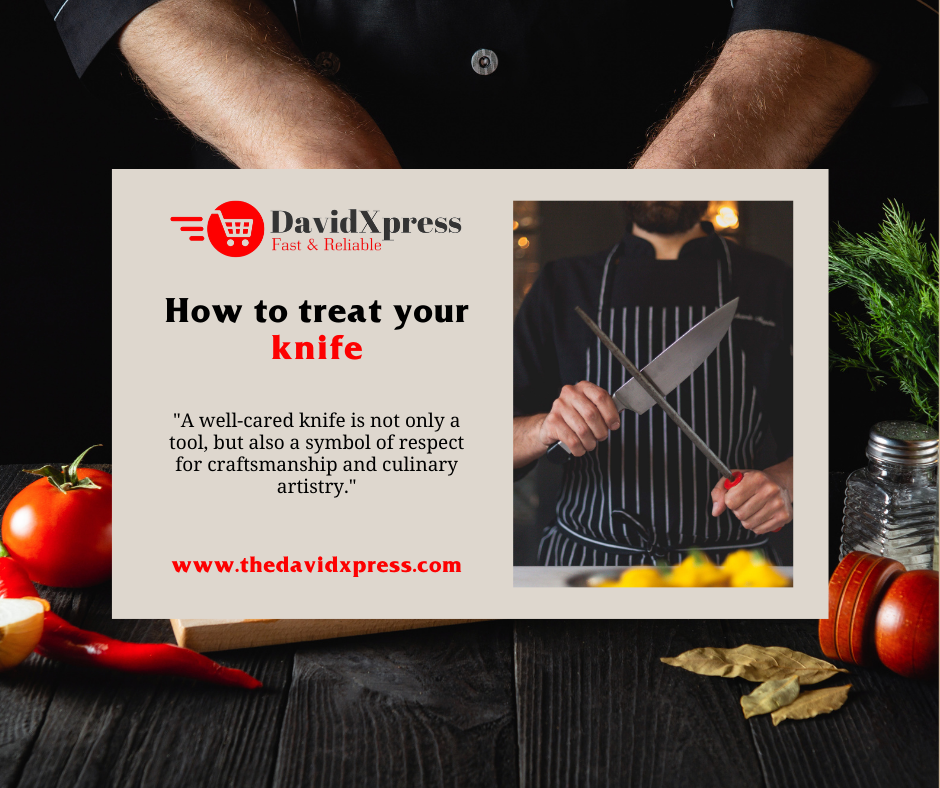Sometimes I get asked: How should I treat my new knife?
I appreciate this question, as it demonstrates the owner’s respect for their knife and their desire to preserve it for long-term use. It’s great that they value their tools.
My knives are designed for practical use—as knives. While they’re made to be used, tasks like cutting steel, hammering nails, or other unconventional applications are not recommended. Of course, if you’re a collector and prefer to display your knife, that’s perfectly acceptable too.
If your previous knife experience is limited to supermarket knives, you might be accustomed to cleaning them in the dishwasher. Or perhaps you own a rugged outdoor knife. Regardless, there are some important care considerations to keep in mind.
Carbon Steel
I use high-carbon steel for all my blades, which means they are not stainless. Think of caring for them like a soldier cares for their firearm. The best practice is to wipe the blade clean immediately after each use, especially if it’s come into contact with acidic substances like fruit juices. If possible, rinse it with clean water and, if necessary, a mild soap. Then, thoroughly dry the blade. This simple routine is usually sufficient. Occasionally, treating the blade with a light coat of olive oil will provide added protection against rust.
It’s important to understand how non-stainless steel behaves. A new knife will have a bright, silvery finish. With use, you’ll likely notice colored areas—blueish or grey—developing on the blade. This is a natural reaction as the steel interacts with different materials. As long as the blade is protected from rust, these colorations are not only harmless but actually beneficial, offering increased resistance to corrosion. Think of the dark, seasoned surface of an old anvil or vise. That’s a patina, a protective layer that develops over years of use, hardening the surface and preventing rust. While it’s possible to re-polish your knife blade, I generally advise against it. Let your knife develop its own unique character and patina.
Wooden handles
I choose not to paint my knife handles. Instead, I leave the wood’s surface open and breathable. While a glossy painted finish might look visually appealing, it would prevent the wood from “breathing” and moving naturally with changes in humidity. Even worse, if moisture were to penetrate the paint through small scratches, it would be trapped, potentially damaging the handle’s appearance. I treat my handles with multiple layers of boiled linseed oil varnish, allowing it to deeply soak into the wood. This protects the surface from moisture while providing a beautiful satin finish.
To maintain the handle’s appearance, you can occasionally apply a small amount of linseed oil varnish (available at most tool shops) and rub it into the wood. I’ve also had good results with a few drops of olive oil. Unlike sunflower or rapeseed oil, olive oil won’t become sticky. Simply rub it in, allow it to dry, and then polish the handle.
Leather sheath
If your knife came with a leather sheath, occasionally treating it with leather conditioner or fat will help restore its protective qualities and shine. This is similar to how you would care for high-quality leather outdoor shoes or boots.
Leather is slightly hygroscopic, meaning it can absorb moisture from the air. If you’re storing your knife for an extended period, it’s a good idea to periodically check if the leather is causing any discoloration or staining on the blade. While I haven’t personally experienced this with my own handmade knives, it’s a possibility to be aware of. It’s likely that the combination of leather conditioner on the sheath and the oil on my blades creates a protective barrier within the sheath, preventing any such issues
For best knives to buy: click here
Follow our social medias also: FaceBook, Instagram, X(Twitter), Pinterest,

